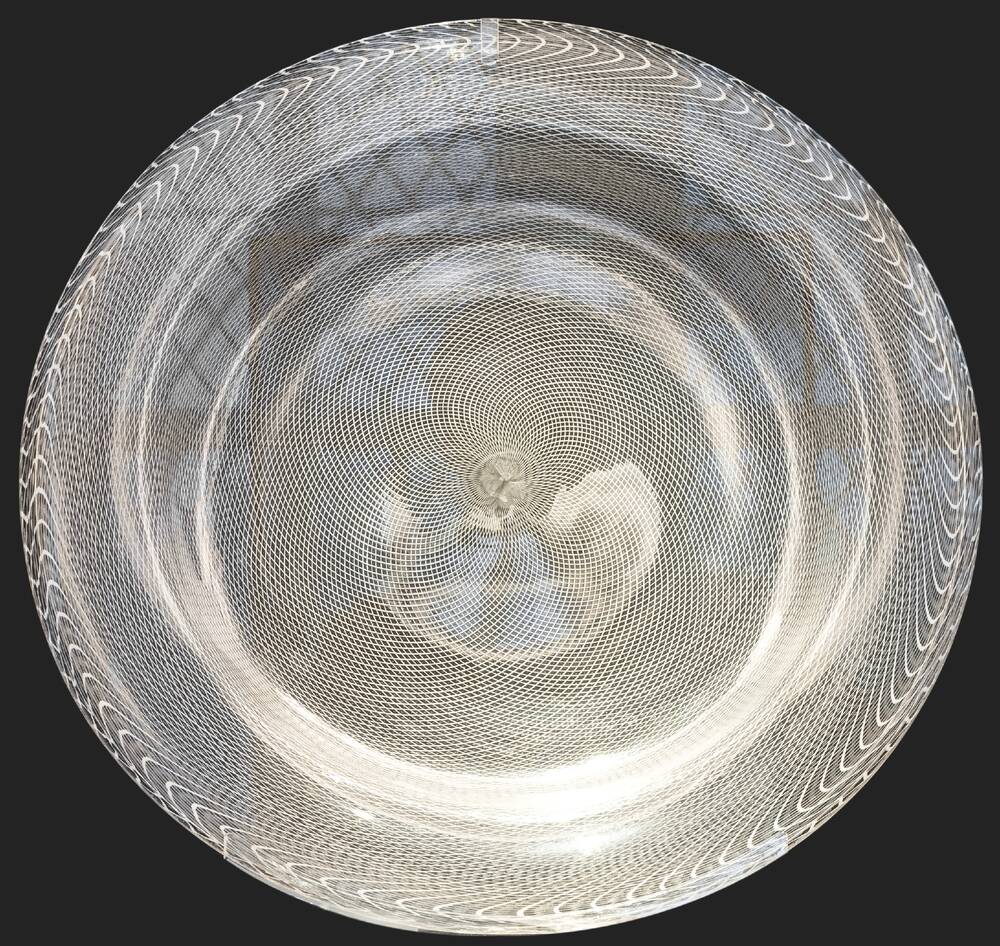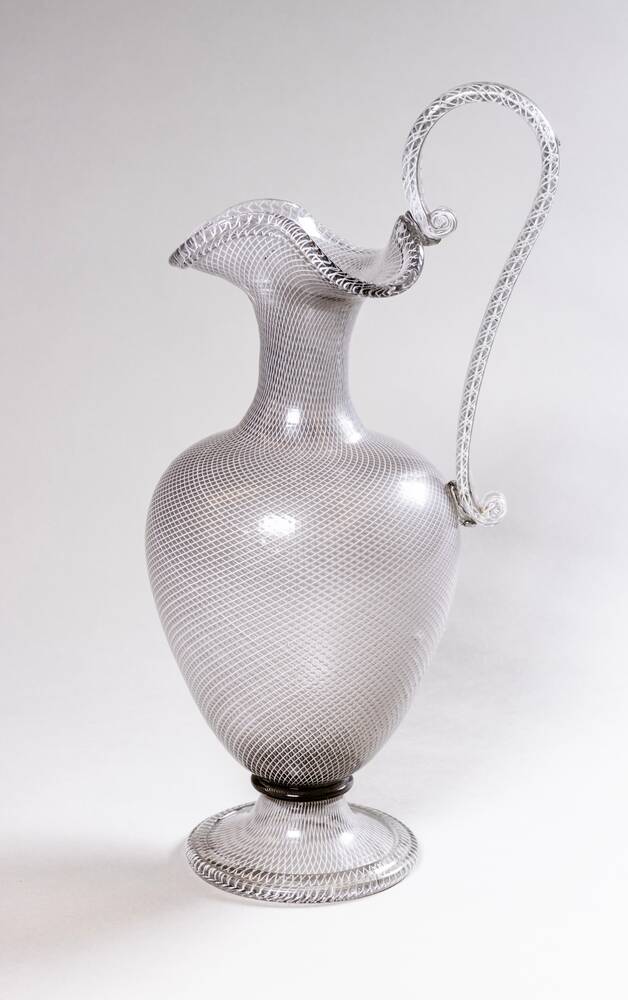Here you see an example of lattice, or reticulated, glass – one of the most subtle and elegant techniques in the whole history of glassmaking. It flourished particularly in Venice at the end of the sixteenth century.
Precious and fragile objects such as this ewer and basin were not really intended for use. They were put on show in the royal courts of Europe to win admiration. However, in the Fugger household in Augsburg – the Fuggers were the wealthiest merchants in Europe – it seems that precious Venetian glass was used. The Silesian knight, Hans von Schweinichen, records in his memoirs of 1575, that he himself broke a galley - a bowl in the shape of a ship - in the Fugger household. He was cold stone sober, he says, when he slipped on the floor while going to fill his master’s glass. He says it was because of stupid sobriety. Later, when he was drunk, nothing of the kind happened to him.
Venetian lattice, or reticulated glass, is such an ingenious technique that it’s worth mentioning how it was done. The glassblower first coated the outside of a hollow conical cylinder with white threads of glass. Then he coated the inside of a second – slightly larger – cylinder of the same shape with threads running in the opposite direction. Then he pressed the smaller cylinder into the larger one, merging the threads in a lattice pattern. Finally he blew it into the desired shape. The interlaced white threads were now embedded in transparent glass. Tiny air bubbles were trapped between the threads.

